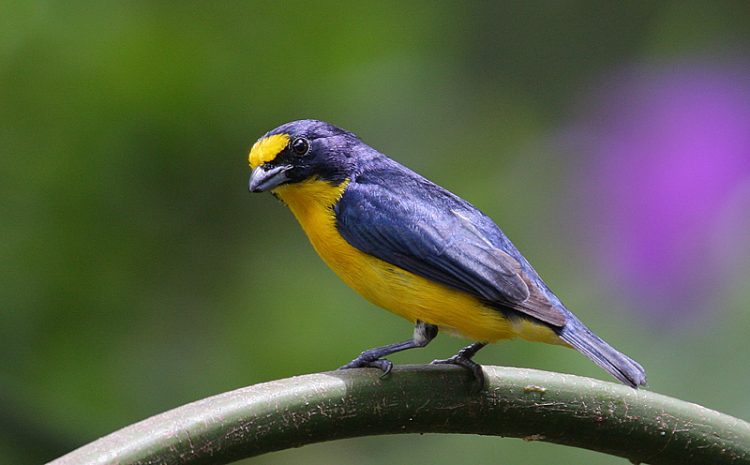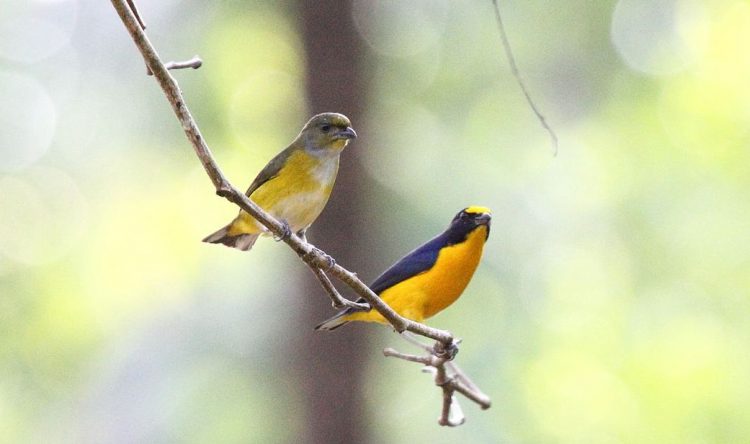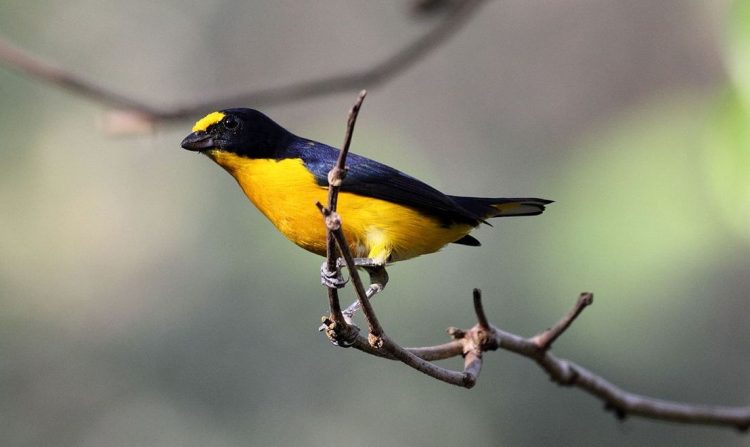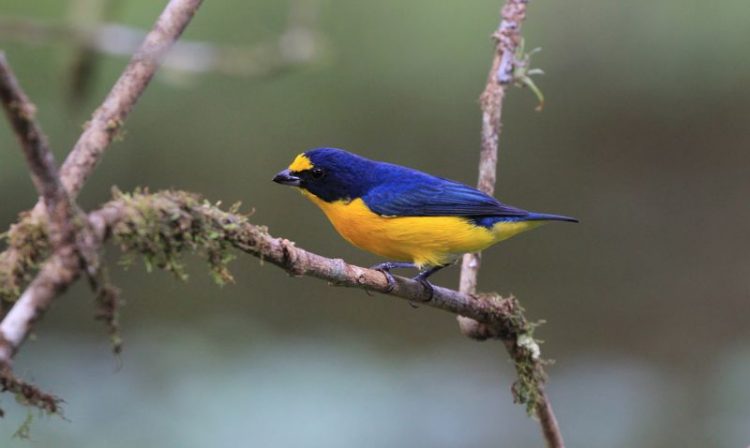Starling birds are so
familiar that birdwatchers all too often ignore it. Yet, if it were as rare
today as it used to be its superb iridescent plumage would rank it as one of
the most beautiful of British Birds. The starling is one of our most common
birds. More than six million pairs breed every year.
In the winter they
are joined by at least 30 million more individuals that migrate here from
northern and eastern Europe. Yet, up until the middle of the last century, the
starling was relatively uncommon in Britain. The rise in the British population
is part of a general pattern throughout Europe in which starlings have
increased in numbers and spread westwards.
Omnivorous
eaters
The reasons for
this population increase is not completely understood but an important factor
is the bird's ability to live on a wide variety of foods. Fruits, seeds, flying
insects, caterpillars, grubs, earthworms and household waste are all eaten,
although the amounts taken of these different foods vary with the season.
In spring the
starling's diet consists mainly of insects and their larvae; in summer fruits
become important; by winter these are replaced with seeds. Throughout the year,
however, animal foods remain an important source of protein. Another reason for
the starling's success is that, during the last century or so, large areas of
Europe's indigenous forests have been cleared to create grassland for farming.
Habitats
Close cropped
grassland is the starling's favorite habitat. One can often see those probing
grassroots for invertebrates such as caterpillars, earthworms, and
leatherjackets (the larvae of crane flies and a serious agricultural. During
the breeding season, starlings spend most of their feeding time in grassland.
However, at other
times of the year, they spread out into new habitats a necessity if they are to
take full advantage of their omnivorous nature. Bushes, hedgerows, and trees are
visited by starlings for fruits such as cherries, elderberries and sloes.
Moreover, they also search stubble fields, newly sown cereal fields and
farmyards for seeds.
Forming
flocks
People often ask
how starlings gather so quickly and in such numbers when food is put out into a
garden. Starlings have an excellent memory, especially when it comes to
remembering places where food appears regularly and in abundance. These places
are always under observation by at least one bird. When food appears, one
starling flies down to investigate.
If it begins to
peck, then all the other starlings nearby recognize this as a sign of food and
fly down to join in. Within a very short time, a feeding flock has formed. The
formation of a flock for feeding is advantageous for the flock members in that
they can feed much faster than when they are on their own.
There are many more
eyes on the look-out for predators such as cats and sparrow hawks. Against
this, however, is the problem that a flock can grow too big for the food
source, with the result that bickering and fighting ensue. The starlings' An omnivorous diet means that.
Depending on what
they are eating, a large flock can either inflict great damage or be of great
benefit. The starlings' consumption of large numbers of leatherjackets is an
obvious boon to the farmer but, on the other hand, they can devastate cherry
orchards that are in fruit.
Roosting
by the million
As well as feeding
in flocks, starlings also roost in flocks. Some times more than a million birds
gather together in night roosts, attracting large numbers of predators. In
places such as Trafalgar Square, huge flocks can be seen wheeling around and
darkening the sky at dusk.
Quite why starlings
roost in such numbers is not yet known, but the advantages must be considerable
since they outweigh the attentions of predators. It may be that roosting
presents a good opportunity for poorly fed birds to learn from their better-fed
neighbors the location of good food supplies.
Nesting
in letterboxes
The starling's
choice of nesting site shows again how well it takes advantage of opportunities
presented by a man. Its most typical nest site is a natural hole, usually in a
tree but also on a cliff. However, any hole of the right size and situation
will do: cavities in the roofs of houses and farm buildings are especially
popular, and on occasions, it even nests in letterboxes.
The breeding season
begins in April. The male chooses his nest site and starts to build the nest a
bulky affair of dried grasses decorated with fresh green vegetation and the
petals of spring flowers. The breeding season is the only time of year when
starlings are territorial.
The male defends a
small territory around his nest site, but other breeding pairs are tolerated
only a few yards away. Once the male has built his nest he tries to attract a
female by flying inside the nest hole and singing. Once the male has a mate,
she completes the nest, lining the cup with material that can range from fine
grasses and feathers to string and cellophane.
Eggs
and Young
Between three and
six eggs may be laid, though the usual clutch is five. The eggs are small,
about 3cm (1in) long, and clear pale blue or blue-green with no markings.
Incubation is carried out mostly by the female and takes about 11 days. At
first, the young chicks are blind and without any feathering, save for a few
tufts of down.
But the chicks grow
quickly since they are fed by both parents on a protein-rich diet of
invertebrates; in the first 12 days their weight increases from 5g (oz) to 60g
(20z). After the twelfth day they virtually cease to add weight, but their
feathers begin to develop rapidly and by the time the chicks are 21 days old
they are ready to leave the nest.
In most years the
parents begin a second clutch of eggs. Between the first and second broods, starlings
often swap partners. The female birds are moving on to join the males at the
other nests. And the situation is further complicated by the fact that a few
male starlings are polygamous, having two females occupying nearby nests.
Mimicry
in birds
The starling's song
is not particularly musical but it is remarkable for its mimicry. Sometimes it
mimics phrases from the songs of neighboring starlings, but it can also mimic
the calls of other birds, including bullfinches, curlews, tawny owls, and green
woodpeckers. It can even imitate mammal noises-as well as inanimate sounds,
such as telephones ringing.
Ornithologists have
discovered that, with some species, if a male possesses a wide repertoire of
songs it has a better chance of breeding successfully. This explains why
starlings make such a variety of noises but not why they mimic 'foreign' sounds
rather than create their own distinct sounds. That remains a mystery.
Starlings are
closely related to those master-mimics, the mynah birds. Unlike the mynahs,
however, starlings cannot imitate human speech. Mimicry is not confined to the
starling family: parrots and jackdaws reproduce words, and many species imitate
other birds.
Product You May Interested
- Feel Emotional Freedom! Release Stress, Heal Your Heart, Master Your Mind
- 28 Day Keto Challenge
- Get Your Customs Keto Diet Plan
- A fascinating approach to wipe out anxiety disorders and cure in just weeks, to become Anxiety free, relaxed, and happy.
- Flavor Pairing Ritual Supercharges Women’s Metabolisms
- The best Keto Diet Program
- Boost Your Energy, Immune System, Sexual Function, Strength & Athletic Performance
- Find Luxury & Designer Goods, Handbags & Clothes at or Below Wholesale
- Unlock your Hip Flexors, Gives you More Strength, Better Health, and All-Day Energy.
- Cat Spraying No More – How to Stop Your Cat from Peeing Outside the Litter Box – Permanently.
- Anti-aging nutritional unexplained weight gain, stubborn belly fat, and metabolic slowdown. Reach Your Desired Weight in a Week and Stay There.
- Get All Your Healthy Superfoods In One Drink
 The Yellow-throated euphonia ranges from southern Mexico to western Panama, through the lowlands of both coasts and into the highlands to an altitude of possibly 4000 feet above sea level.
The Yellow-throated euphonia ranges from southern Mexico to western Panama, through the lowlands of both coasts and into the highlands to an altitude of possibly 4000 feet above sea level. The male and female worked in the closest harmony. Usually, they arrived together, each with a length of the grass blade in its bill.
The male and female worked in the closest harmony. Usually, they arrived together, each with a length of the grass blade in its bill. The male is a brilliant little bird, black glossed with violet and blue over all the upper plumage except the forehead and forepart of the crown, which bright yellow like the entire underparts are.
The male is a brilliant little bird, black glossed with violet and blue over all the upper plumage except the forehead and forepart of the crown, which bright yellow like the entire underparts are. From the other black and yellow euphonias that inhabit northern Central America.
From the other black and yellow euphonias that inhabit northern Central America. Yellow-throated euphonia wander widely through clearings and plantations with scattered trees, where they feed largely on the berries of mistletoes.
Yellow-throated euphonia wander widely through clearings and plantations with scattered trees, where they feed largely on the berries of mistletoes.















